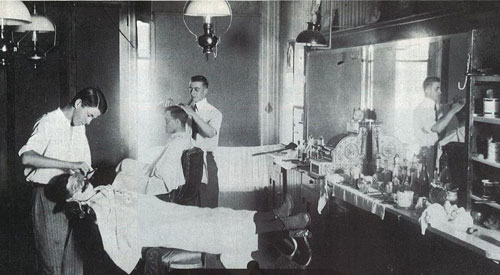
SkyTide
Official publication resource of Gramatik LTD
Related Posts
The Secret Dual Nature of Labor: Why Your Coat is More Than Just a Coat
In understanding commodities, we don’t just see a bunch of items stacked up in a store; we’re looking at the result of labor that serves a dual purpose. Commodities, like a coat or a piece of linen, aren’t just objects with a price tag—they’re snapshots of human effort, containing two different kinds of labor.
Let’s look at it this way: imagine a coat hanging in a store and a roll of linen on a nearby shelf. The coat costs twice as much as ten yards of linen. Why? This isn’t just about materials; it’s about two separate types of value baked into each product, thanks to the labor behind them.
Two Sides of Labor: Useful vs. Exchange Value
Labor has a split personality. On one side, it’s useful labor, the type that creates things with practical purposes—like weaving to make cloth or tailoring to make a coat. Every useful thing has its own unique labor behind it. After all, you can’t just swap one coat for another identical one and expect it to serve the same purpose; they’re made by different hands and with different skills.
But labor also has an exchange value side. This is the aspect of labor that lets us measure one item against another, unrelated one. Take a bag of coffee and a laptop. They seem totally different, but when you consider them as commodities, they become equalized in the world of exchange. They’re linked by the hidden work hours poured into them, allowing for a price comparison.
The Social Division of Labor: Why You’re Not Doing Everything Yourself
In our society, labor isn’t just about making things; it’s about creating different kinds of useful items through specific types of work. A coat comes from tailoring; linen comes from weaving. This division of labor doesn’t just allow for specialization but builds the foundation for a world where people can exchange goods. A surgeon and a farmer don’t have to grow their food or fix their broken bones because society lets each person focus on one skill.
Interestingly, there are societies that have division of labor without commodities. In ancient communities, everyone pitched in with different tasks, but items weren’t traded as commodities—they were just distributed as needed. Even modern factories divide labor without turning each task into an individual commodity.

Would you like to have a clean shave and root canal therapy at once?
From Coat to Value: When Different Labor Types Become Equal
Think about the coat again. No matter who wears it, the labor behind it stays the same. Whether made by an amateur for personal use or a professional tailor, a coat only exists because someone invested time, skill, and effort. This kind of labor, aiming to satisfy a need, is universal—clothes have been made for thousands of years before tailoring became a profession.
Every product is the result of human labor working alongside nature. We take materials from the earth—cotton, leather, minerals—and transform them into useful objects. Labor is the creative force, shaping raw materials into items we need. Or, as economist William Petty put it, “Labor is the father, and the earth is the mother.”
Abstract Labor: What Unites Every Commodity
Now, here’s where things get abstract: in the world of value, labor sheds its individual identity. The effort to make a coat or weave linen turns into what Marx calls abstract labor—an average, universal kind of effort stripped of all particular qualities. Whether it’s a coder debugging software or a chef cooking a meal, in terms of exchange, all their work becomes this generic “labor” measured by time.
When we say a coat is twice the value of linen, it’s not about quality or craftsmanship anymore; it’s about how long it took to make. If it takes twice as long to tailor a coat as it does to weave linen, then the coat has twice the value.

How Efficiency Changes the Game
Let’s say the time to tailor a coat drops by half due to new tech. The coat’s use value (keeping you warm) hasn’t changed, but its exchange value has. Because the labor time decreased, so does the value. This paradox means that, in a strange twist, you can produce more items while decreasing the overall value of each one. Think of smartphones: faster manufacturing lowers the cost, making them accessible but also reducing their individual value over time.
So, here’s the takeaway: labor is a force of duality. It’s concrete when creating useful things like coats and linen, but in the realm of exchange, it transforms into an abstract, universal metric of time spent. This “dual nature” of labor is the beating heart of economics, quietly fueling the value of everything we see around us.
Stay tuned for the next part of Econ Unplugged, where we’ll dive deeper into how this abstract labor links with other concepts, turning commodities into the powerful players in the capitalist market
Open a trading account with a Broker right now
Read the Risk Warning before you register
Find more interesting stories and news about investments on our subreddit XGramatikInsights.

FXgram
The Ugly Truth About Trading
Related Posts
Risk Warning: Trading Forex and Leveraged Financial Instruments involves significant risk and can result in the loss of your invested capital. You should not invest more than you can afford to lose and should ensure that you fully understand the risks involved. Trading leveraged products may not be suitable for all investors. Before trading, please take into consideration your level of experience, investment objectives, and seek independent financial advice if necessary. It is the responsibility of the Client to ascertain whether he/she is permitted to use the services of the website based on the legal requirements in his/her country of residence.